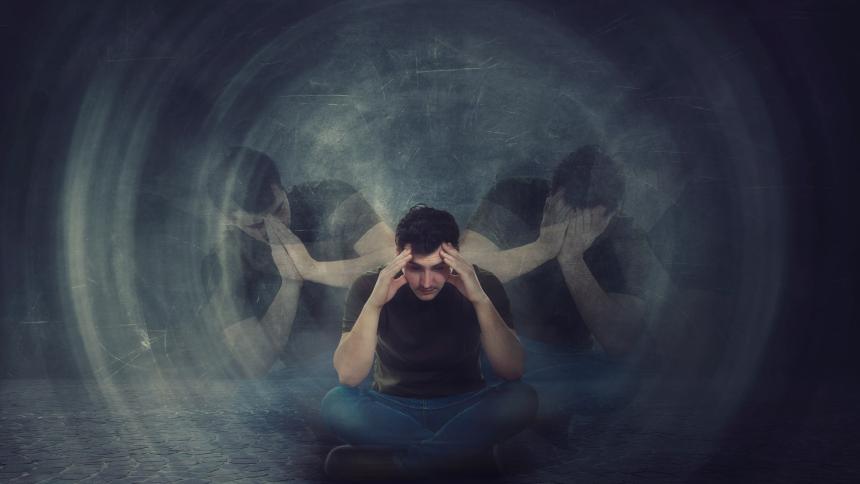
What are the common mental disorders in prison? An expert explains...
In a new series of guest articles, Consultant Forensic Psychiatrist Dr Sohom Das shares stories and insights from his experience working at the crossroads of mental illness and offending. In the first instalment, he addresses the perennial question of why prison is so rife with mental illness.
In my professional role as a Consultant Forensic Psychiatrist, I have worked inside secure psychiatric units for the most violent patients, in criminal courts and in prisons. In my latter position, I couldn’t help wondering why mental illness is so rife in those incarcerated at Her Majesty’s pleasure.
The obvious connection is the environment of prison itself. Restricted freedom, isolation, separation from friends and family, bullying and the constant threat of violence would affect most people’s mood, regardless of whether they suffered from mental illness or not. But there are other factors at play. A more subtle connection is the myriad of social issues which work as confounding factors. As was clearly laid out within the inmates’ records I would read before I assessed them in clinic, many of the same disadvantages in life (poverty, joblessness, homelessness, previous trauma, felonious peers and drug abuse) that lead people to crime also predispose to a whole host of mental illnesses.
Let’s take a look at the specific mental health issues that prisoners suffer from.
Personality disorders
Personality describes the characteristic patterns of thinking, feeling and behaviour that make up who we are and how we feel about ourselves and the world around us. It’s what makes us, us. When an individual’s personality is disordered, they may experience difficulties in how they think and feel about themselves and the world around them. They often clash with others.
Antisocial personality disorder, sometimes called dissocial personality disorder, the younger brother of psychopathy, is common among offenders. This is a mental condition in which a person consistently shows no regard for right and wrong and ignores the rights and feelings of others. People with this disorder tend to antagonise, manipulate or treat others harshly or with callous indifference. They show no guilt or remorse for their behaviour. These individuals often violate the law. They may lie, behave violently or impulsively, and have problems with drug and alcohol use. Because of these characteristics, people with this disorder typically can’t fulfil responsibilities related to family, work or school. Unsurprisingly, this diagnosis is over-represented in males. Very broadly speaking, from my experience, people with antisocial personality disorder are career criminals. They enjoy the lavish life and gangster image. Many are forced into it from an early age.
I also commonly see borderline (also known as emotionally unstable) personality disorder, which occurs more frequently in females in the general population. This is a serious malady that causes unstable moods, behaviour and relationships. It is characterised by unstable or changing relationships, impulsive or self-damaging behaviours (e.g. excessive spending, unsafe sex, substance abuse, reckless driving, binge eating, self-harm) and problems with anger, including frequent loss of temper or physical fights. Again, with some liberal generalisation, my experience is that people with a borderline personality disorder do not intend to offend, but they cannot contain their emotions, especially during a crisis or confrontation. They will lash out impulsively, aggressively and excessively. Unlike their antisocial personality disorder peers, they often regret their actions afterwards but they cannot help themselves at the time.
Anxiety and depression
These mental health issues are distinct from personality disorders, as they are not as ingrained baseline characteristics. They are unsurprisingly common, given the aforementioned vicissitudes of many prisoners, which act as confounding factors. The assessment and treatment of these disorders is usually relatively straightforward; a combination of antidepressants and psychotherapy. One large female prison I worked in was lucky to be very well staffed with psychologists who could give therapy, but this is very much the exception, particularly in the male estate.
Self-harm goes hand-in-hand with depression and is a colossal problem in prison. In fact, it is a leading cause of morbidity [the rate of disease in a population] in inmates; the annual prevalence has been estimated in England and Wales to be 5 to 6 per cent in men and 20 to 24 per cent in women. This greatly exceeds the general population which is less than 1 per cent for adults.
Relevant prison-specific environmental risk factors include solitary confinement and sexual or physical victimisation. In addition to the psychiatrists, psychologists and nurses, we recruit inmates to address this dire problem. Senior prisoners are trained as ‘listeners’ by the Samaritans to give counselling to their particularly distressed peers.
Another safeguard in the UK is the Assessment, Care in Custody and Teamwork (ACCT) process, which involves regular one-to-one sessions, heightened observation of the subject, regular support sessions and reviews by a large multi-disciplinary team. Although this is a welcome step, it does have weaknesses. Inmates who truly wish to kill themselves will mask their true desperation to prevent interference. Also, many prisoners are embarrassed about the stigma of being seen to be mentally ill, especially in the hyper-macho prison culture where the weak are easy prey.
Post-Traumatic Stress Disorder
This disorder is the long-term psychological response from life-threatening trauma. The core features are reliving an ordeal (in the form of nightmares or flashbacks), hypervigilance (intense anxiety and a tendency to be easily startled), emotional numbness, and attempts to avoid reminders of the previous trauma. Occasionally, this is acquired in prison (for example, if inmates are the victims of extreme physical or sexual abuse behind bars). However, a far more common scenario is for this to have developed in earlier life but is exacerbated during incarceration.
A few years ago, in the space of six months, I assessed around seven or eight cases with very similar presentations; Eastern European men had been smuggled into England illegally and were kept locked up and forced to work in drug houses for several weeks as payment to the human traffickers. They were caught and imprisoned. Being locked up once again would trigger flashbacks and other symptoms, making their post-traumatic stress disorder spiral out of control.
Schizophrenia
Although relatively rare in the general population (around 1 per cent), I see this with alarming frequency in the prison population. This is characterised by periods of psychosis where the subject steps outside of reality and experiences hallucinations and delusions. Although the vast majority of cases are not dangerous, there is a small cohort who are driven towards violence. I have seen dozens of inmates who hear voices, telling them to attack random strangers or people they know. One young man heard voices that persuaded him that his elderly neighbour was a paedophile and commanded him to attack him with a broom.
I’ve also seen many cases of paranoid delusions which have led to assaults. Another man became convinced that prisoners, officers and even the prison governor were chanting at night to entice voodoo spirits to shrink his genitals. He punched one of the offices and was sent to the segregation unit. Here he was prescribed anti-psychotics by the prison mental health team and he improved after a month. This was one of the rare success stories, but many prisoners fester whilst on the extraordinarily long waiting lists to be transferred to secure psychiatric units for proper treatment and rehabilitation. Alas, this scenario is far too common in prisons all across the country.
About the author: Dr Sohom Das is the host of a YouTube video podcast called A Psych for Sore Minds that discusses his own real-life cases (anonymising his patients), to give viewers an insight into his work. The podcast covers a whole range of topics related to true crime and mental illness in which Dr Das uses his professional perspective as a Consultant Forensic Psychiatrist to dissect the crossover between the two.
For more information on mental illnesses in prison visit Psych for Sore Minds where there is a whole series that analyses mental illness within prisons, including the tragic suicide of Sarah Reed, who hung herself in her cell whilst waiting for a psychiatric assessment.







